
Major organs of the Korean Workers’ Party Central Committee, as of January 2014 (Graphic: Michael Madden/NKLW).
On January 8, 2013 KCNA reported that elections for the 13th Supreme People’s Assembly [SPA] would be held in March. The announcement of the SPA election occurred less than a month after the purge and execution of top DPRK official Jang Song Taek, as well as after a series of national events held in December 2013 to mark key anniversaries. After Jang’s execution Korean Workers’ Party [KWP] elder Kim Kuk Tae passed away which resulted in North Korea disseminating its first national funeral committee list since the death of leader Kim Jong Il in December 2011. The funeral committee and attendance lists at these national events provide Pyongyang watchers with some insight about the composition of North Korea’s political elite, particularly on two of the country’s major power and policymaking organizations, the KWP Political Bureau (in the party) and the National Defense Commission [NDC] (in the government). With the not-unexpected announcement of the SPA election in March, it might be useful to look at some of the senior personnel changes in the Political Bureau and NDC that have occured in the second half of 2013.
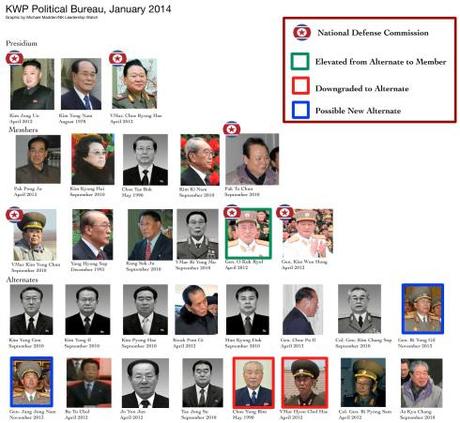
Political Bureau
The most noticeable senior personnel changes in the second half of 2013 occurred in the KWP Political Bureau. It appears that at least one alternate member has been elevated to full membership status and two full members were downgraded to alternate status.
Full Member
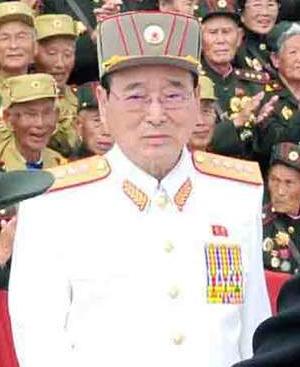
Gen. O Kuk Ryol at a commemorative photo session for war veterans in Pyongyang on 30 July 2013.
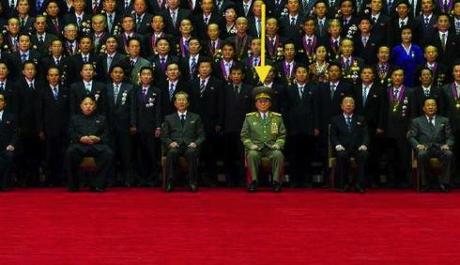
Gen. O Kuk Ryol attends a photo-op with scientists in November 2013 (Photo: Rodong Sinmun).
Gen. O Kuk Ryol
Elected as a Political Bureau alternate at the 4th Party Conference in April 2012, Gen. O was upgraded to full membership on the during 2013. Although his elevation has not been formally publicized by state media, Gen. O’s name has appeared with other full Political Bureau members at state events in May and July 2013 (a) and on the Kim Kuk T’ae funeral committee with his name listed prior to Gen. Kim Won Hong, a full member of the Political Bureau since April 2012. Another indication of Gen. O’s rising status was his attendance with Kim Jong Un at a photo-op with scientists in November 2013 (b). Aside from national anniversary events or attending concerts with other senior officials, Gen. O has largely avoided attending personal appearances by the supreme leaders.
A Vice Chairman of the National Defense Commission, O Kuk Ryol is involved in North Korea’s intelligence operations targeting South Korea. Since the 1980s he has been a leading figure in the country’s WMD program. One might view Gen. O as the DPRK’s Dick Cheney, an elder official with enormous influence over policy that operates in the shadows. Gen. O was a war orphan whose ties to the Kim Family go back to 1945. He might assume the eminence grise role previously held by his reputed rival Jang Song Thaek.
Alternate Members
As of January 2014 there appear to be four new alternates in the KWP Political Bureau. Alternates attend Political Bureau meetings and enjoy some of the perks of office (classified reports, a small support staff in the party), but have no voting rights. In the last half of 2013, two full members of the Political Bureau were downgraded to alternate status.
Choe Yong Rim
Once a member of the Political Bureau’s first-among-equals organization, the Presidium (or standing committee), Choe vacated that membership when he was replaced as DPRK Premier in April 2013. A Kim Family retainer (he served as Kim Il Sung’s presidential secretary), the urbane and mild-mannered Choe was appointed Honorary Vice President of the SPA Presidium, a position given to semi-retired elder officials. Whether Kim Jong Un retains Choe Yong Rim, even in a diminished capacity, will be clarified when the 13th SPA convenes in April.
VMar Hyon Chol Hae
During 2013, Hyon Chol Hae lost both his full membership on the Political Bureau and his concurrent positions as 1st Vice Minister of the Armed Forces and Director of the KPA General Logistics Department. Historically, vice ministers of the People’s Armed Forces have not been part of the Political Bureau, making Hyon’s April 2012 election as a full member unusual. It is not clear if Hyon’s political status has dropped precipitously, or if his former position as 1st Vice Minister has been politically downgraded. Pyongyang watchers will have to see whether the man (Col. Gen. So Hong Chang) who replaced Hyon as 1st Vice Minister is elected to the Political Bureau.
Hyon was a close military aide and advisor to Kim Jong Il. Numerous images of Hyon accompanying the late leader are scattered throughout North Korea’s official historical chronicles. Hyon’s influence in the power center in the mid-2000s was considered so significant that some Pyongyang watchers speculated he was the real power in the DPRK.
The downgrading (c) of the membership status of Choe Yong Rim and VMar Hyon Chol Hae is a clear indication that Kim Jong Un continues to gradually step away from officials closely associated with his father and grandfather.
New Blood on the Political Bureau?
The Political Bureau may have two additional alternates in its ranks. Since its 2010 revival as an active power organization, three Political Bureau slots have been earmarked for the top members of the KPA’s high command: the Director of the KPA General Political Department, the Minister of the People’s Armed Force and the Chief of the KPA General Staff (d). Until the removal from office of VMar Ri Yong Ho as chief of the general staff in July 2012 and VMar Kim Jong Gak as Minister of the People’s Armed Forces in October 2012, every member of the high command was a full member of the Political Bureau. (e) As the officeholders of the positions of Minister and Chief changed multiple times during 2012 to 2013, the incumbents became Political Bureau alternates starting with their election at the March 2013 plenum of the KWP Central Committee. However, both the Minister and the Chief were later replaced. The Political Bureau status of the men who replaced them, Gen. Jang Jong Nam and Gen. Ri Yong Gil, has not been conclusively established.
One possibility is that Gen. Jang and Gen. Ri assumed their predecessors’ alternate spots on the Political Bureau. In state media (f) coverage of the December 9 expanded meeting of the Political Bureau, Gens. Jang and Ri were shown sitting in a row comprised of both full and alternate Political Bureau members. When the Political Bureau “adopted a decision of the Political Bureau of the Party Central Committee on relieving Jang of all posts, depriving him of all titles and expelling him and removing his name from the WPK,” a vote was taken. An image of the vote shows several full members of the Political Bureau raising their hands, while known alternate members do not raise their hands (g). The Political Bureau status of Jang Jong Nam and Ri Yong Gil becomes murky when considers their their positions (or ranking) on the Kim Kuk Tae national funeral committee (h) list. On the list Ri is ranked #4 and Jang #5 (i). This suggests that they are not alternates, but rather full members of the Political Bureau.
While the Political Bureau status of Gen. Jang Jong Nam and Gen. Ri Yong Gil is not certain, Pyongyang watchers can be assured that these two are next in line to join the Political Bureau.
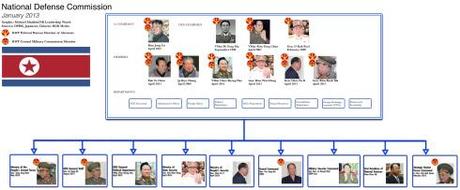
National Defense Commission
Although the DPRK Constitution has established the NDC as North Korea’s supreme power organization, some Pyongyang watchers have questioned whether the NDC has been eclipsed by the Party Central Military Commission. Kim Jong Un’s first senior job title, at least in public, was as Vice Chairman of the CMC. There have been several convincing rumors traced to Pyongyang that command and control over the KPA is gradually migrating from the NDC to the CMC. The NDC will be the key organization whose function in the North Korean government could be modified during the first session of the 13th Supreme People’s Assembly in April and whose membership could be overhauled.
Even before there were rumors of Jang Song Thaek’s purge, the NDC apparently already lost one member. Jang’s execution created a second empty slot as well as a vacancy among the NDC’s four vice chairmen. If Kim Jong Un intends to maintain the NDC as an active power organization it is likely Jang’s replacement will be elected at the 13th SPA’s first session.
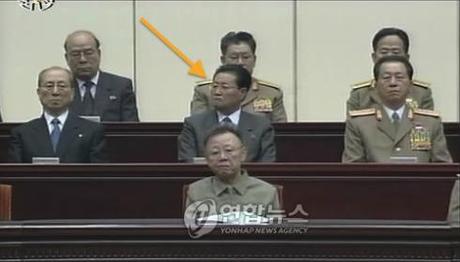
Paek Se Bong (annotated) attends a ceremony marking the 15th anniversary of the death of DPRK President Kim Il Sung in July 2009 (Photo: KCTV-Yonhap).
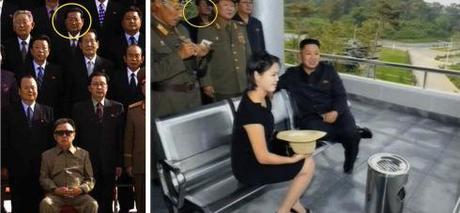
Paek Se Bong in September 2010 and August 2012 (Photos: KCNA/KCTV).
Paek Se Bong
Until the fall of 2013 Paek Se Bong was the chief operating officer of North Korea’s military industrial complex in his capacity as Chairman of the Second Economy Commission (a.k.a 2nd Economic Committee). He was a leading figure in the production of conventional arms and WMDs. Paek Se Bong’s last observed appearance was in August 2012 when he accompanied Kim Jong Un on a tour of the library at the KPA Exhibition of Arms and Equipment. Despite few explicit mentions of his name in state media during the last ten years, Paek almost always sat on the platform at national meetings and SPA sessions. Paek has not been observed to have attended any anniversary or central report meetings and was not present at the 6th and 7th sessions of the 12th SPA, held respectively in September 2012 and April 2013.
While accounts differ on the circumstances behind Paek’s ouster (one rumor says he died of natural causes in October, while another claims he was dismissed by Kim Jong Un), sources agree that Paek is no longer on the job. Despite being one of the most significant personnel appointments Kim Jong Un has made since he assumed power two years ago, the North Koreans have kept the name of Paek’s replacement as Second Economy Commission Chairman secret. Pyongyang watchers will have a better idea on Paek’s replacement if he assumes Paek’s NDC membership at the 14th Supreme People’s Assembly.
Filed under: Uncategorized
